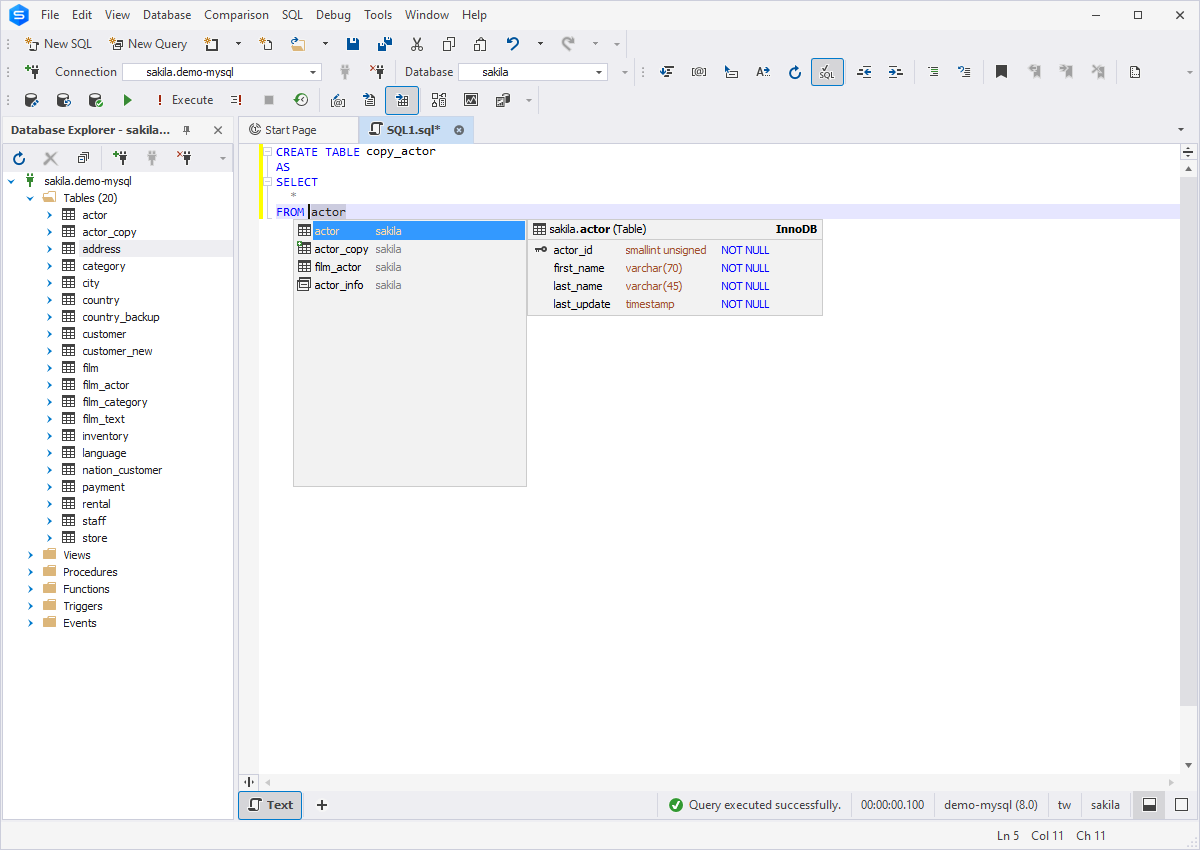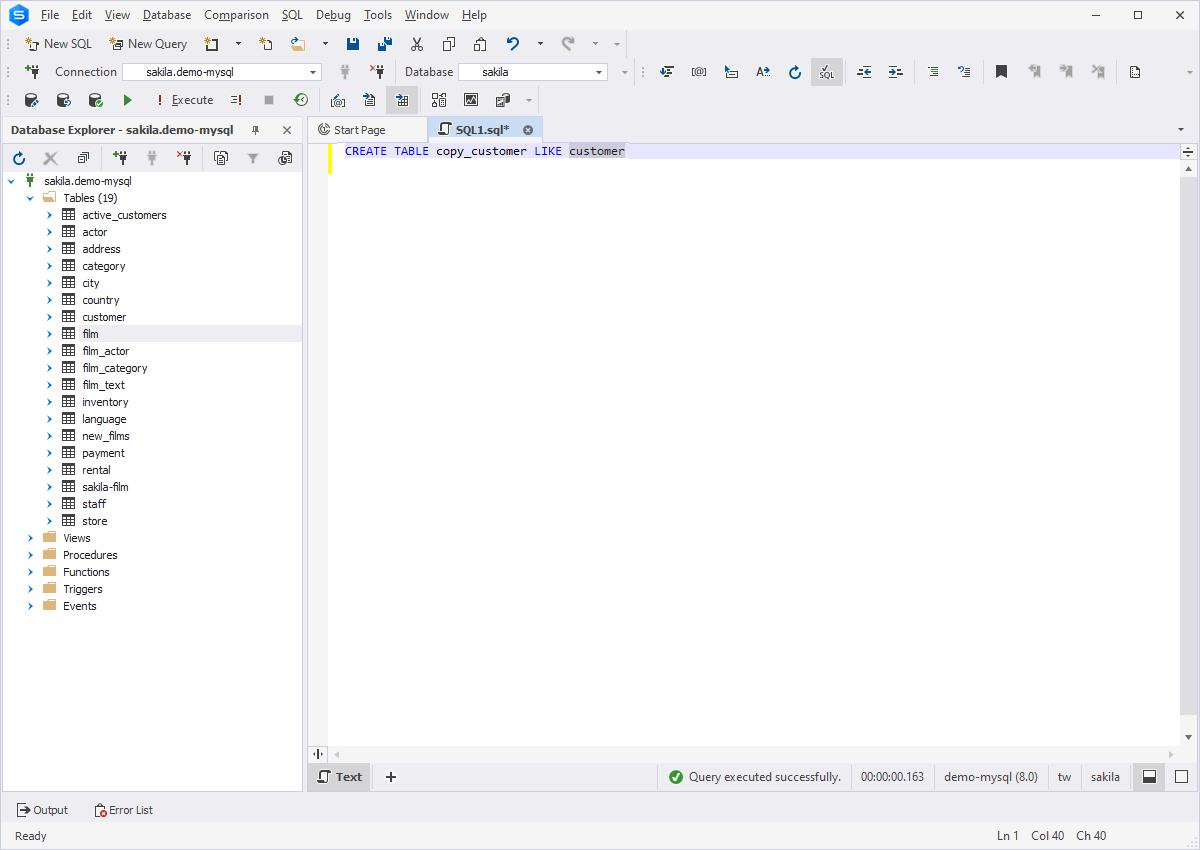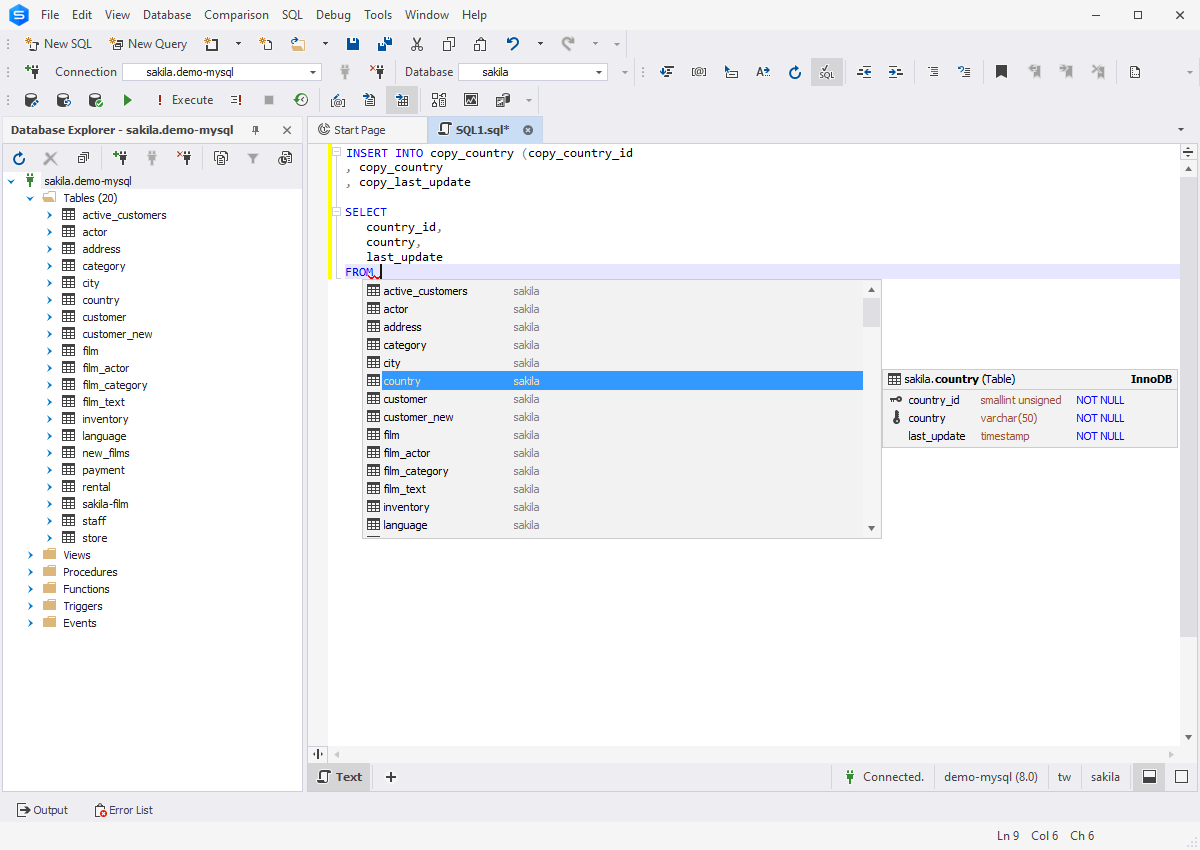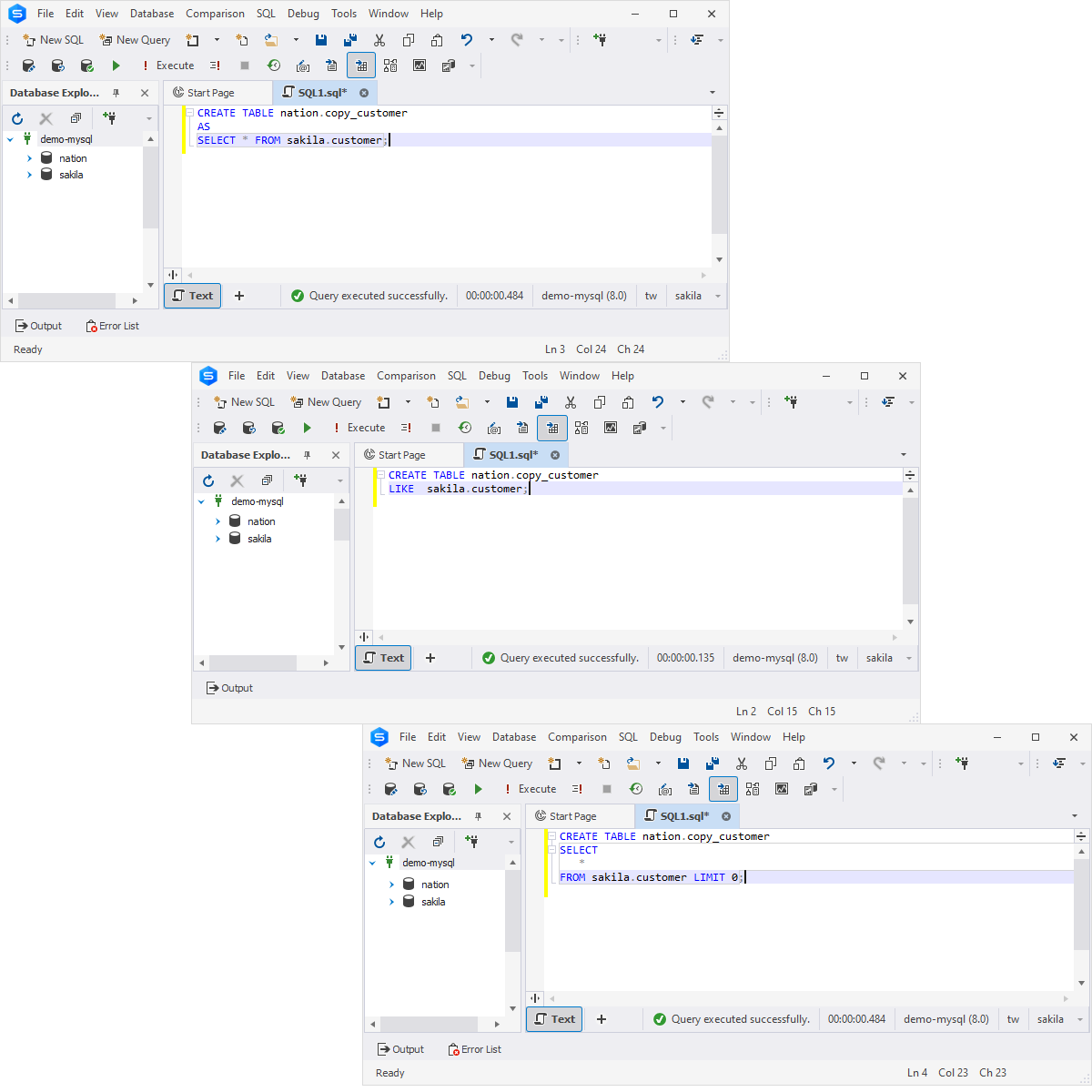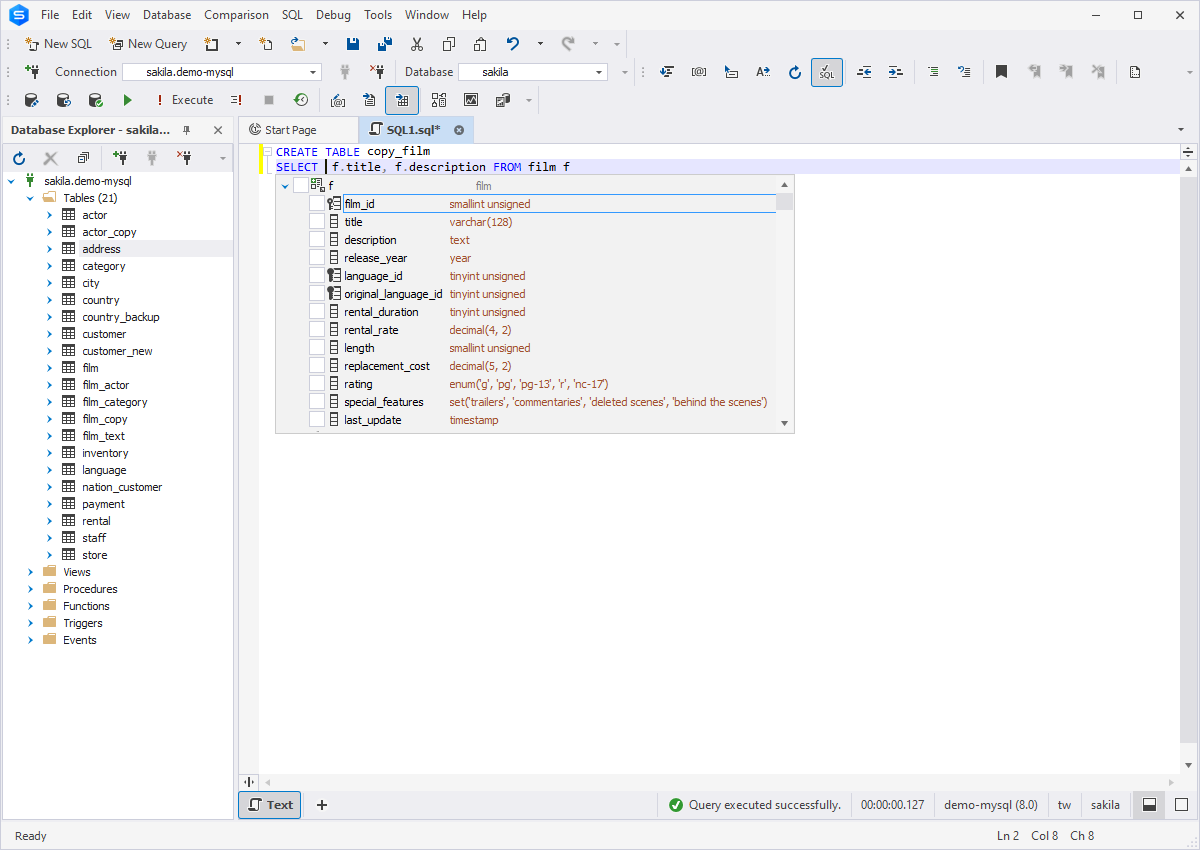How to Copy a Table in MySQL: Duplicate the Structure, Data, and Indexes Correctly
Copying MySQL tables is a routine operation that can be performed by DBAs, developers, and analysts dozens of times a day for various purposes. Here are some of the cases when you need to have a quick way to copy a table at hand.
Read the following guide to find out:
You must back up your table before modifying it
One of the most common situations is when you need to introduce certain changes to the data stored in your table. Naturally, a backup/copy made beforehand is a perfect precaution.
You want to test the results of a complex query
Another case comes when you need to test a complex SQL query on your table. You make a copy and conduct your testing on it. If something goes wrong, you can always go back.
You are migrating to a new environment
You might need to move a table structure and/or its data to a new database or environment—for instance, when you are moving to a new MySQL/MariaDB instance.
Your table goes through different development stages
Finally, there can be a case when your table needs to go all the way from development to testing and production—and you simply copy it to each subsequent environment.
